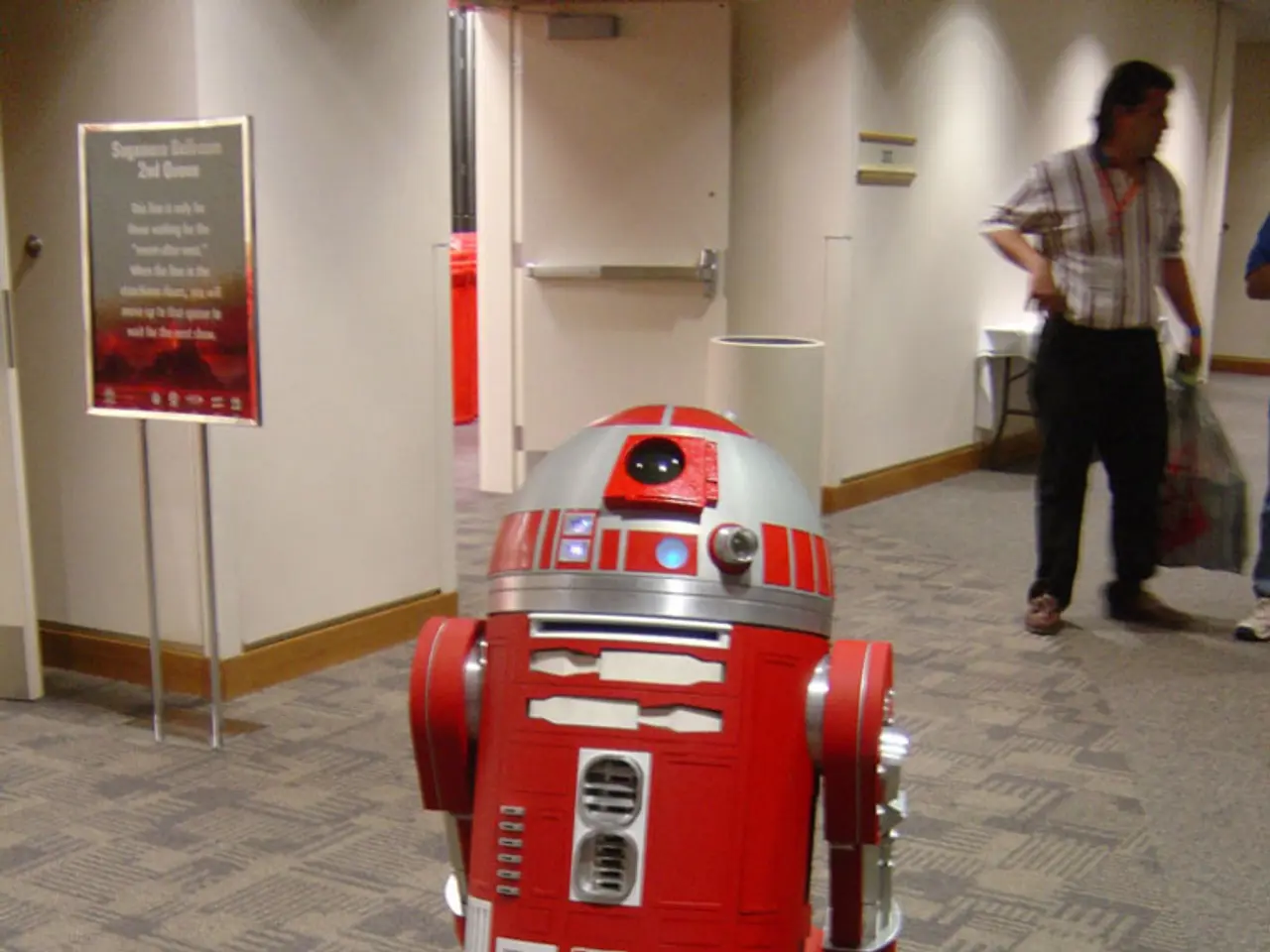"Shrimp gets tossed into a cooking vessel by R1 - Evolution of humanoid robots to kitchen assistants"
The world of technology is abuzz with the latest developments in humanoid robots, and the IFA tech fair in Berlin is proving to be a hotspot for these innovations. One of the standout robots at the fair is R1, a kitchen helper manufactured by Robbyant, a company of the Chinese Ant Group.
R1, while currently a prototype, is expected to make its debut in Germany starting in 2024. According to Robbyant's CEO, Zheng Yuewen, R1 has potential for future deployment in hospitals and nursing homes, relieving people of monotonous tasks and creating more space for creative activities. However, it's important to note that R1, while showcased as a kitchen helper, lacks the ability to prepare a real meal and relies completely on a given recipe.
The humanoid robot scene is not just limited to kitchen duties. Japanese manufacturers are pioneering the field, viewing humanoid robots as companions, not just work tools. In Japan, an aging nation, there is a growing need for technologies that support daily life and convey closeness.
The future of humanoid robots is uncertain, with experts divided on whether they will be used massively in households in the near future. Takayuki Ito, president of the International Federation of Robotics, finds it uncertain whether there will be mass use of humanoids. Peter Fintl, a technology expert at consulting firm Capgemini, believes that broader productive use of humanoids will take two to three years.
However, the next few years are crucial in determining whether humanoid robots will transition from prototype to everyday helper. Advancements in artificial intelligence, materials technology, and price reduction are key factors that could make humanoid robots more accessible and practical for everyday use.
The cost of a humanoid robot is expected to more than halve by 2035, according to Martin Schulte. The German startup Neura Robotics aims to deliver 5 million robots by 2030 - for industry, services, and home.
Meanwhile, robots are already making their mark in households, with more than a quarter of German households using robots for cleaning, and almost one in five using robots for lawn mowing in 2020. Sales figures for robotic vacuum cleaners, lawn mowers, and window cleaning robots have significantly increased in the first half of 2021.
In the realm of household robots, companies like Roborock, currently the world market leader, are launching models with arms to move obstacles like socks or shoes. Dreame has developed new models that can overcome door thresholds of almost five centimeters in height. At the IFA, Dreame and competitor Anker are showcasing small automatic stair climbers for vacuum robots.
As the technology evolves, humanoid robots are likely to be deployed in industry first, and then make their way into the home. The classic mass market with an iPhone-like moment is still awaited for humanoid robots, according to Thomas Thiele. Nearly two-thirds of Germans expect robots to improve life in the next five to ten years, indicating a growing acceptance and anticipation for these technological advancements.
R1, with its friendly design and female-oriented form, is a testament to the growing interest in humanoid robots. As these robots continue to evolve and overcome technical challenges, particularly in the areas of fine motor skills, balance, and movement, they are poised to play a significant role in our daily lives.
Read also:
- Peptide YY (PYY): Exploring its Role in Appetite Suppression, Intestinal Health, and Cognitive Links
- Aspergillosis: Recognizing Symptoms, Treatment Methods, and Knowing When Medical Attention is Required
- Nighttime Gas Issues Explained (and Solutions Provided)
- Home Remedies, Advice, and Prevention Strategies for Addressing Acute Gastroenteritis at Home








